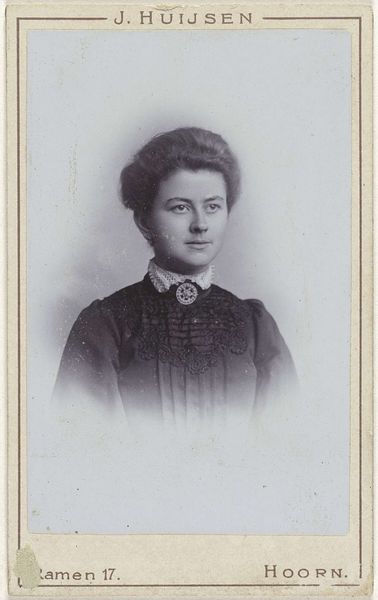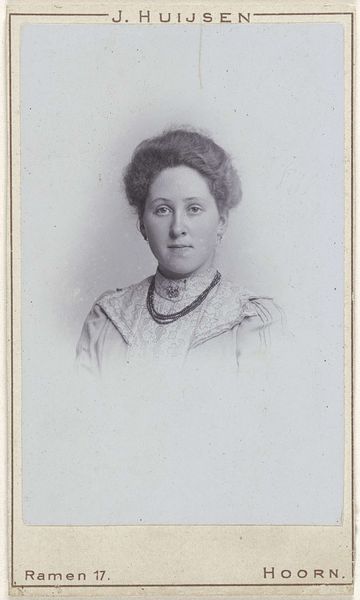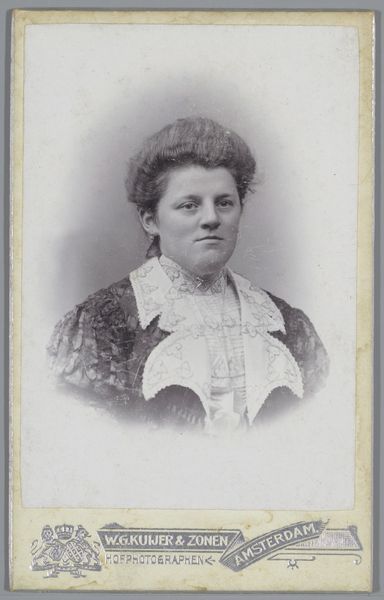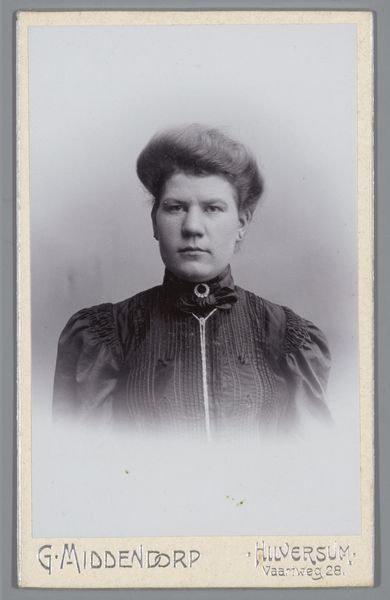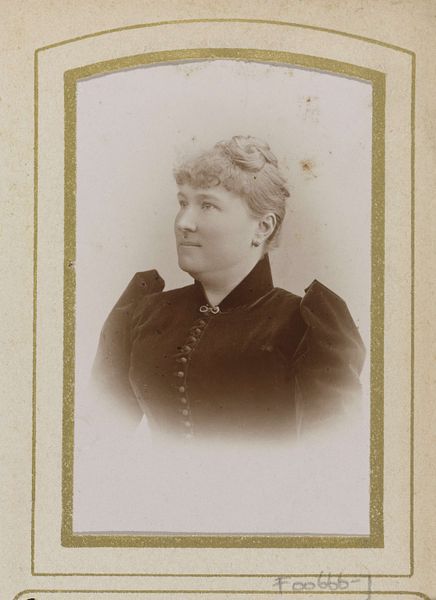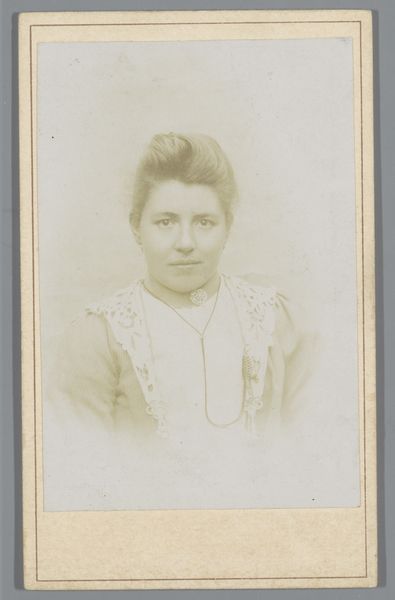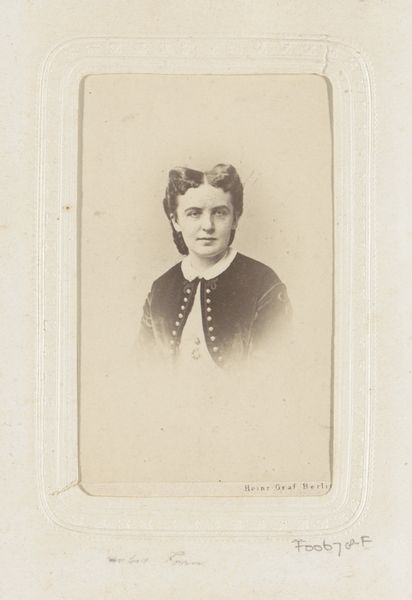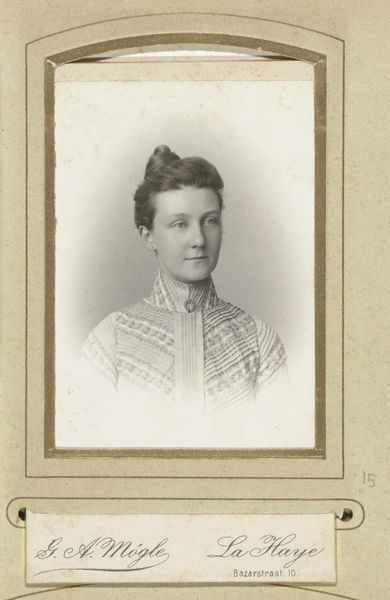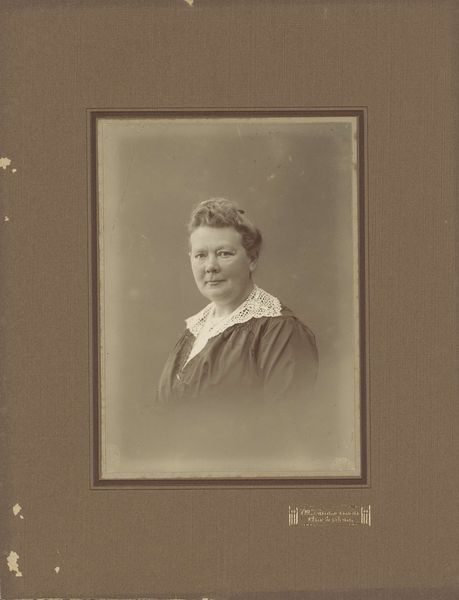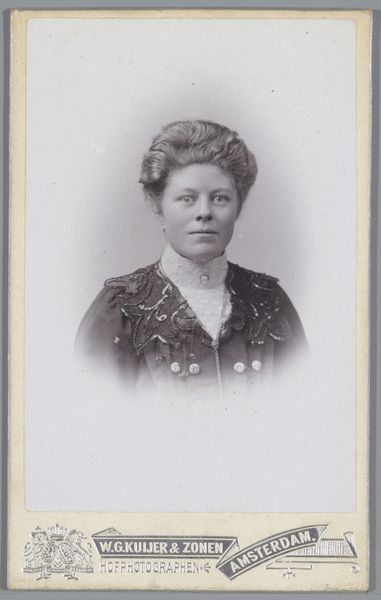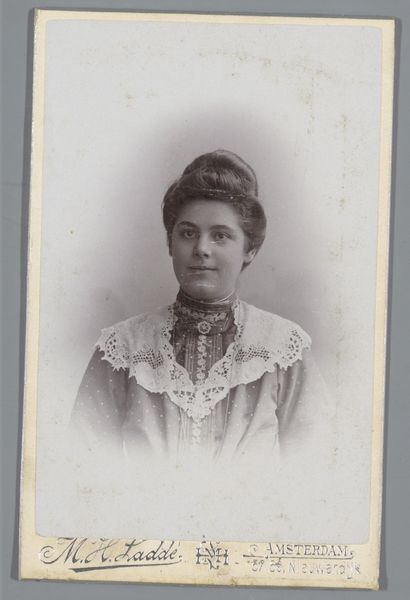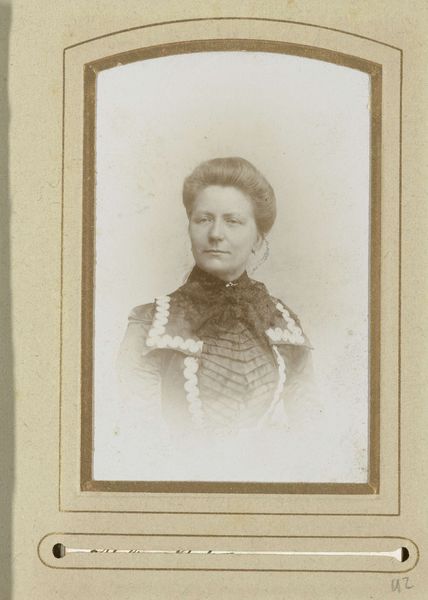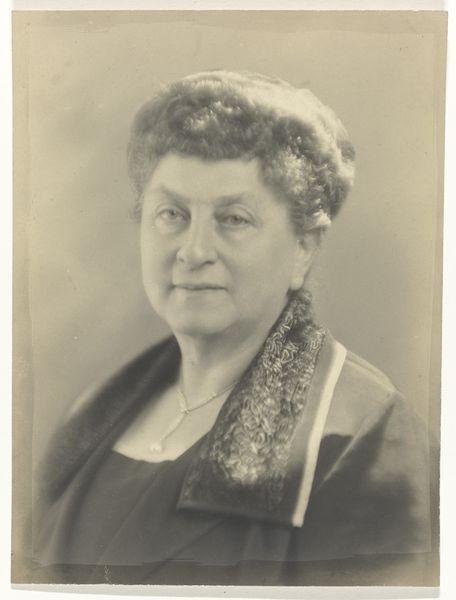
Dimensions: height 88 mm, width 52 mm, height 104 mm, width 61 mm
Copyright: Rijks Museum: Open Domain
Editor: So, here we have a photo portrait titled "Studioportret buste van jongedame" taken sometime between 1908 and 1915 by Johannes Laurens Theodorus Huijsen. It’s currently held in the Rijksmuseum. It's... intriguing. It seems like a very typical portrait of that era, but the photographic style gives it an almost dreamlike quality. What’s your interpretation of this work? Curator: Well, this portrait offers a glimpse into the evolving role of photography and its intersection with social status in the early 20th century. Studio portraits became increasingly accessible to the middle class during this period. Notice the woman's clothing and adornments - they suggest a certain level of societal comfort. Editor: I see what you mean. It’s interesting how the rise of photography democratized portraiture but also created new codes for representing oneself. Do you think her clothing makes it very clear that she is part of the bourgeoisie of that time? Curator: Absolutely. And the fact that she chose to be photographed – this act of self-representation – speaks volumes. Consider the socio-political context: What did it mean for a woman to commission her own portrait during this time? This image, in that context, subtly reflects an increasing level of female autonomy. Editor: That’s fascinating! I never thought of it that way. I was so focused on the aesthetics and technical aspects. Curator: The power of art often lies in its subtle mirroring of social dynamics. Seeing art, like this photography, through a historical lens allows us to excavate these complex layers of meaning, prompting critical conversations about the power relations embedded within visual culture. Editor: Thanks, this made me understand how a simple portrait can carry significant socio-political weight.
Comments
No comments
Be the first to comment and join the conversation on the ultimate creative platform.
